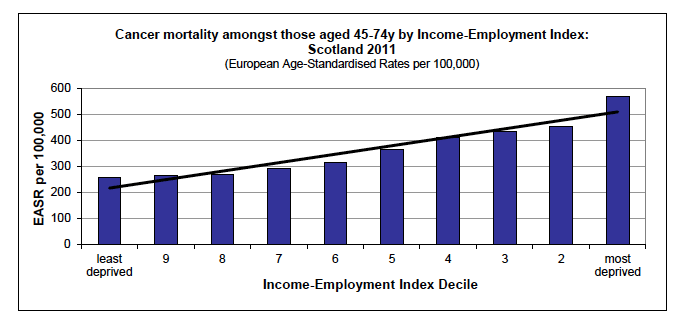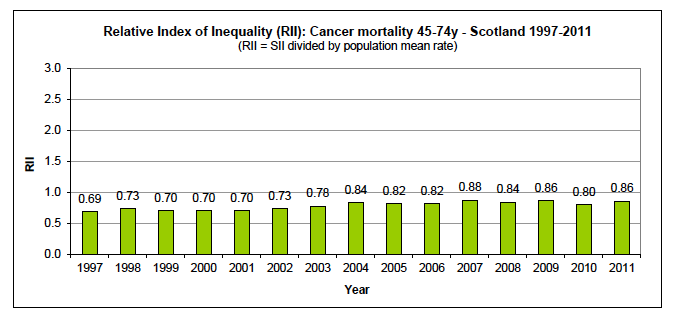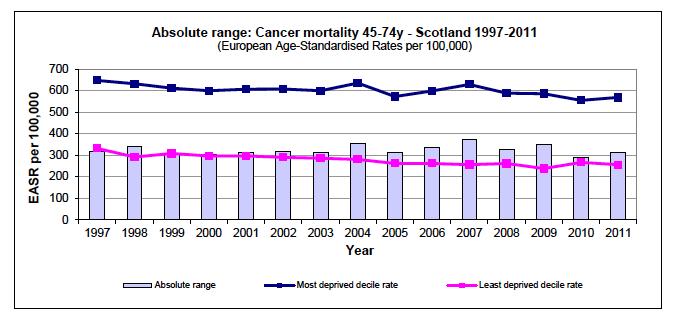Long-term Monitoring of Health Inequalities: Headline Indicators - October 2013
Annual update of the 'Long-term Monitoring of Health Inequalities' headline indicators.
This document is part of a collection
Cancer- deaths aged 45-74 years
Summary
- Over the long term there has been a slight increase in relative inequality, although this has been more stable since 2004. Absolute inequalities have fluctuated over time with no clear trend.
Between 1997 and 2011, there was a 19.7% decrease in the death rate from cancer amongst those aged 45-74 years (around 7,400 deaths in 2011). People aged 45-74 living in the most deprived areas are more than twice as likely to die of cancer than those in the least deprived areas (567 per 100,000 population compared to 256 per 100,000, in 2011). Over the long-term, the death rate in the most deprived areas has reduced by a similar amount as in the least deprived areas, though there has been fluctuation through the period (in particular since 2004) with no clear trend. Relative inequality has increased slightly over the long-term (as indicated by the overall increase in RII) but has been more stable since 2004.
Inequalities gradient in the most recent year available

Relative Index of Inequality (RII) over time

Absolute range over time

Scale / context
| Number of deaths |
Target population size |
Rate per 100,000 (EASR) |
|
|---|---|---|---|
| 1997 |
8,068 |
1,635,590 |
446.9 |
| 1998 |
7,995 |
1,646,711 |
440.0 |
| 1999 |
7,904 |
1,658,124 |
433.8 |
| 2000 |
7,776 |
1,670,660 |
422.8 |
| 2001 |
7,903 |
1,687,422 |
430.1 |
| 2002 |
7,850 |
1,703,819 |
422.4 |
| 2003 |
7,706 |
1,724,940 |
409.3 |
| 2004 |
7,678 |
1,750,293 |
402.0 |
| 2005 |
7,606 |
1,771,454 |
396.7 |
| 2006 |
7,486 |
1,793,423 |
386.6 |
| 2007 |
7,569 |
1,818,202 |
385.4 |
| 2008 |
7,536 |
1,843,609 |
378.0 |
| 2009 |
7,481 |
1,869,363 |
370.3 |
| 2010 |
7,394 |
1,893,493 |
361.8 |
| 2011 |
7,428 |
1,915,930 |
358.8 |
Contact
Email: Craig Kellock
There is a problem
Thanks for your feedback